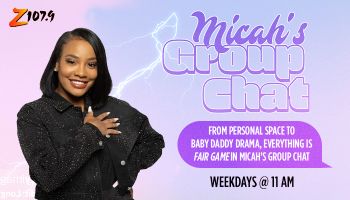
Source: Jovanmandic / Getty
While tradition often involves witnessing unions between individuals who share the same religious views, the concept of multi-religious families is gradually growing. According to Pew Research Center, “Fully one-quarter of young adults in the Millennial generation (27%) say they were raised in a religiously mixed family. Fewer Generation Xers (20%), Baby Boomers (19%) and adults from the Silent and Greatest generations (13%) say they were raised in such a household.”
As most things, multi-religion households come with their fair share of both pros and cons. Realistically speaking, these families may face external judgment or societal pressures, as some communities may not fully accept or understand the dynamics of such households. Not only must the couple honor the different traditions, but when children are added into the picture, it is typical for the family to want the children to do the same. This lifestyle can be confusing for the child, but overtime can bring about amazing journeys through faith, self-realization, a broader worldview, and a deeper appreciation for cultural nuances. Many times these families will leave the ball in their children’s court once they are old enough to make decisions for themselves, allowing them to choose how they would prefer to identify.
Communication takes the forefront in these households allowing families to be open and vulnerable when it comes to their personal beliefs. Open dialogue goes a long way when strengthening familiar bonds and being open and understanding of not only your own faith, but that of those around you. This results in what potentially looks like a family culture that thrives on mutual respect and a celebration of differences with communication serving as the foundation.
Take Nick (Muslim) and Chisa Hamilton (Christian), for example. When the interfaith couple living in New York City first started dating, Nick was not practicing Islam. I talked with the now married couple about how they practice living as Muslims and Christians under one roof and how they are approaching these topics with their toddler son. When asked how they navigated the conversation around their different religious backgrounds when they first started dating, Nick shared, “I don’t think it was necessarily navigation, as much as it was informational. I don’t think Chisa knew much about the Islamic faith and I don’t think she had been around it.” This prompted Nick to enlighten his wife on a subject she had little knowledge of but would soon become quite familiar with.
Navigating holidays, particularly, in an interfaith household can present challenges, but both Nick and Chisa prioritize respect, carefully considering each holiday tied to their individual faiths. “For his holidays, I may do a day or two,” Chisa shared about making sure she shows her husband that she supports him and acknowledges his beliefs even if they differ from her own. Nick says, “We want to show each other that we support each other and care about each other no matter the religion. Specifically, it goes back to information, especially when it comes to Islam and Christianity. Anything coming out of those belief systems are very much alike, so it only makes sense.”
While the two share a mutual understanding in respecting each other’s religion, they have faced difficulties, particularly with one notable challenge that arised when Nick had a conversion about religion with Chisa’s parents who weren’t always on board with the differences. “I think that the largest challenge came initially from my wife’s parents. They didn’t understand it and they were very afraid that conversion would be forced on her. They didn’t understand the Islamic faith and did not understand how the relationship would work if I was not a Christian,” Nick says. “Working through it consisted of speaking to them about the belief system and what goes on, the things I believe, and just kind of opening their eyes and getting rid of some of the preconceived notions that they had.”
The prospect of the couple having their own child has sparked meaningful discussions on their part, as well. Managing the inclusion of varied religious backgrounds into family life, particularly with children in the picture, demands thoughtfulness and an environment where each family member’s beliefs are acknowledged. With open communication serving as the catalyst in an interfaith relationship, understanding, unity, and celebration of the diverse perspectives are welcomed with open arms. The couple currently celebrates all sides of who they are and once their son is old enough to make decisions on his own, they plan to let him decide for himself. When asked what advice they would give other couples trying to navigate an interfaith relationship, communication and understanding was what they believed mattered most.
Exploring Harmonies and Challenges: Inside the World of Multi-Religious Families was originally published on elev8.com
















